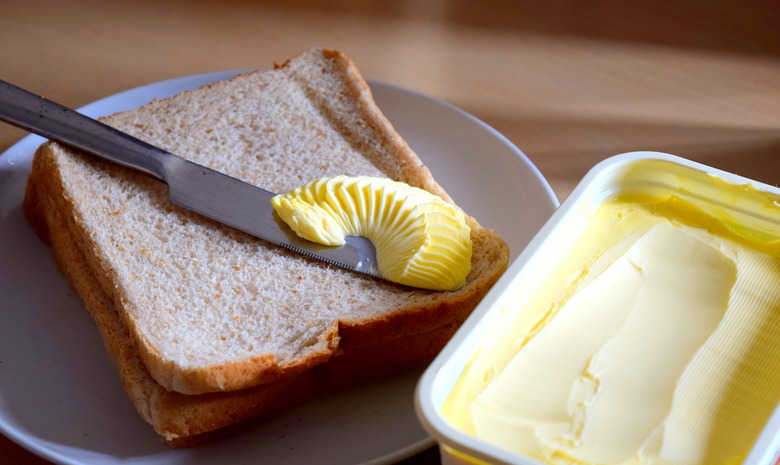What Does Hydrogenated Mean?
The word "hydrogenated" is one that most people have come to associate with nutrition information labels, usually in the context of identifying a dietary oil. The paired terms "saturated fat" and "unsaturated fat," along with the complementary "cis fats" and "trans fats," all relate to the state of hydrogenation of the molecule under discussion. Adding hydrogen molecules to oils is a simple but controversial process connected to the well-established cardiovascular health risks of consuming a diet high in certain types of fats. Complicating the picture: The medical consensus in this area is ever-evolving, and different people have different levels of susceptibility to hydrogenated oils.
TL;DR (Too Long; Didn't Read)
The word "hydrogenated" refers to the state of having extra hydrogen added. This process is often used in food chemistry to make a fat or oil more solid.
Hydrogenation in Chemistry
Hydrogenation in Chemistry
Hydrogen is the lightest and simplest of the elements, consisting of a single proton and a lone electron. It is abundant in nature and is found in water, virtually all foods, industrial fuels, acids and bases, and biological organs and tissues.
Hydrogenation, as the name suggests, involves adding one or more hydrogen atoms to an existing substance that still has room in its architecture to form additional bonds. Hydrogen can form only one bond, but carbon atoms and oxygen atoms – the other elements found in dietary fats – can form four and two respectively. A carbon may be "double-bonded" to an oxygen atom or another carbon atom, and breaking this bond allows for two hydrogen atoms to be introduced to the molecule.
Hydrogenation tends to turn liquid fats into solid fats, making them more spreadable (for example, margarine).
Unsaturated, Polyunsaturated, and Saturated
Unsaturated, Polyunsaturated, and Saturated
Because fats containing double bonds, or even a single double bond, can receive additional hydrogen atoms, they are said to be unsaturated. A fat with only one double bond is monounsaturated, while a fat with multiple double bonds is called polyunsaturated.
Vegetable oils are unsaturated and exist as liquids. Adding hydrogen atoms reduces the number of double bonds and drives the resulting molecule closer to a state of saturation as its carbon-carbon double bonds are replaced by carbon-carbon single bonds and two new hydrogens, one for each carbon atom. The more saturated the product, the higher its melting point and the more solid it is at room temperature.
Fats that contain no double bonds are said to be saturated, and, accordingly, are typically found in solid form. Butter is an example of such a product, as is the fat found in and around everyday meats such as chicken, beef and pork.
Partially and Fully Hydrogenated
Partially and Fully Hydrogenated
Fats that undergo full hydrogenation become saturated fats. By the middle of the 20th century, biochemists had determined that saturated fats could increase the blood level of "bad" cholesterol, so designated because it was associated with a higher risk of cardiovascular disease, though the effects of dietary saturated fat and cholesterol intake on levels in the body are still undergoing research.
However, fats that undergo partial hydrogenation end up containing something called trans fatty acids. These "trans fats" have also been implicated as a risk factor for heart disease. These fats contain multiple double bonds and are described as "partially hydrogenated" on food labels.
In 2013, the U.S. Food and Drug Administration made the official determination that trans fats are actually dangerous, and two years later the agency gave food manufacturers three years to eliminate these substances from their products or petition for their special use. Trans fats are commonly found in cookies, icings and frostings, frozen pizzas, coffee creamers, and microwave popcorn – that is, they are a big part of the American desserts and snacks landscape.
References
- Elmhurst College: Virtual Chembook: Hydrogenation of Unsaturated Fats
- Food Safety Authority of Ireland: Trans Fatty Acids and Hydrogenated Vegetable Oils
- Annals of Internal Medicine: Association of Dietary, Circulating, and Supplement Fatty Acids With Coronary Risk: A Systematic Review and Meta-analysis
- Berkeley Wellness: Hydrogenated Oils
Cite This Article
MLA
Beck, Kevin. "What Does Hydrogenated Mean?" sciencing.com, https://www.sciencing.com/what-does-hydrogenated-mean-13710233/. 27 March 2018.
APA
Beck, Kevin. (2018, March 27). What Does Hydrogenated Mean?. sciencing.com. Retrieved from https://www.sciencing.com/what-does-hydrogenated-mean-13710233/
Chicago
Beck, Kevin. What Does Hydrogenated Mean? last modified March 24, 2022. https://www.sciencing.com/what-does-hydrogenated-mean-13710233/
